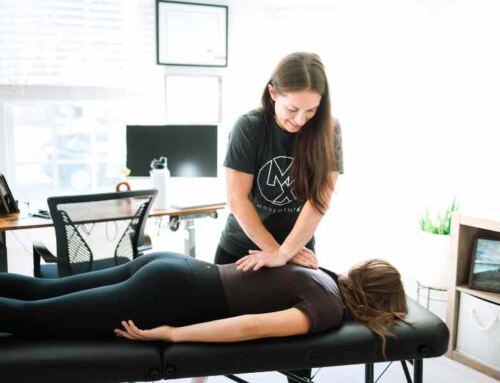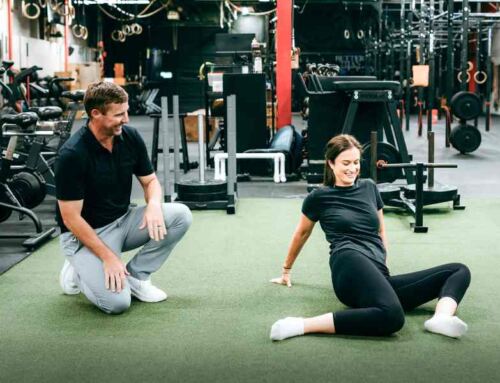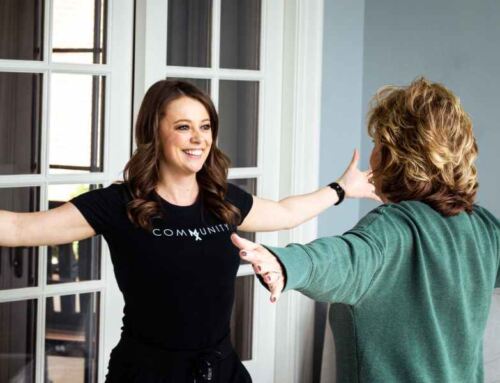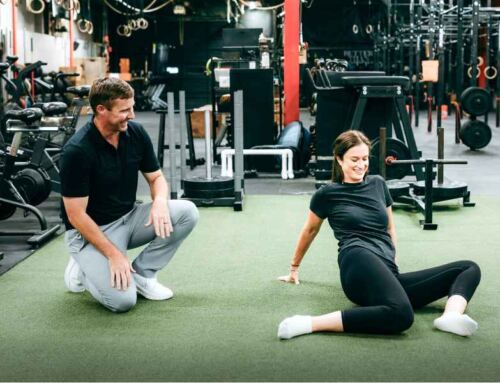As a physical therapist, I’ve always admired the discipline and intensity of CrossFit athletes. The workouts are no joke. They demand strength, stamina, mobility, and mental grit. Unfortunately, there is a misconception that CrossFit leads to injury. My own fitness routine has traditionally included strength training and cardio, but I had never stepped fully into the CrossFit world… until recently.
Since joining the team at MovementX, I’ve had the opportunity to treat clients in a variety of settings, including CrossFit Angier. In an effort to not only improve my own fitness but also to better connect with the athletes and coaches I support, I began participating in classes myself.
To say those first few workouts were humbling would be an understatement.
Despite my background in movement and exercise, I quickly uncovered mobility restrictions and movement patterns I hadn’t previously noticed in my own body. It was an eye-opening reminder that no one is immune to imbalances or limitations (even a PT).
Before each workout, the coach would say “If you want to see perfect technique, look over at the physical therapist”. And I was thinking to myself, “Oh my gosh, please don’t”. It was the classic do as I say, not as I do!
Coaching is Key
Initially, what stood out to me most was the coaching. The team at CrossFit Angier is exceptional. They prioritize safety, emphasize proper technique, and encourage members to meet their goals without sacrificing form or function. Do not get me wrong, they will push you to become the best version of yourself. And that’s everything I hope for as both a physical therapist and an athlete.
Common Misconceptions About CrossFit
There are a number of misconceptions when it comes to Crossfit. One misconception is that CrossFit is only about competition. I feel that it’s as competitive as you want to make it. Granted, you should be competing against yourself, striving to progress toward a stronger, healthier you. However, Crossfit is about community. The entire class wants to see everyone succeed, which is evident by the cheers throughout each workout.
Another misconception is that Crossfit is only for trained individuals. The truth is Crossfit is designed for individuals of all fitness levels. Similar to physical therapy exercises, Crossfit workouts can be modified to each athlete’s ability. From there, you can progress to higher level moves and exercises (see where I’m getting at with the similarities to physical therapy?).
But the most common misconception is that CrossFit leads to injury. The truth? Like any sport or physical endeavor, injury risk increases without proper guidance, mobility, and control.
Research shows that reported instances of injuries with CrossFit training programs were comparable or lower than injury rates in Olympic lifting, distance running, track and field, rugby, or gymnastics (injury rates in football and soccer were much higher)[1].
With the right coaching and a strong foundation, CrossFit can be an incredibly effective, safe, and empowering way to train. And that’s where physical therapy comes in.
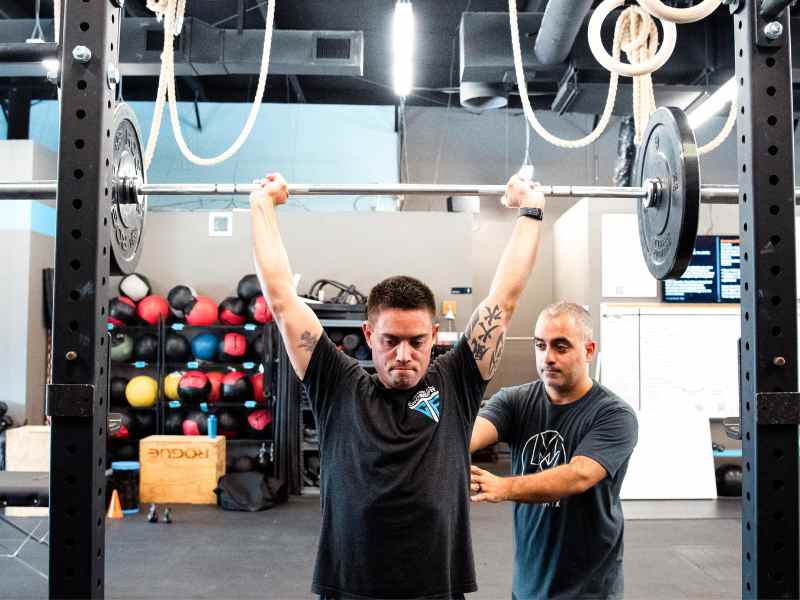
How Physical Therapy Complements CrossFit
PT and CrossFit are a perfect match. Physical therapists are trained to identify and address the very mobility, strength, and motor control impairments that can limit performance or contribute to pain.
For example, overhead squats and snatches require adequate shoulder and thoracic mobility, as well as shoulder stability. Many people lack the amount of shoulder external rotation and thoracic extension required to reach these positions.
A full depth squat requires adequate thoracic, hip, and ankle mobility. A shift to one side while squatting may indicate a hip or ankle restriction on the opposite side.
By working with a PT, athletes can resolve movement restrictions (utilizing manual therapy and mobility exercises), enhance joint mechanics (focusing on activating stabilizing muscles through movement), improve body awareness (balance and proprioception), and ultimately get more out of their workouts—without pain (though the good kind of muscle soreness is to be expected!).
Weaving It In
Pain, movement restrictions, or strength/balance impairments can leave you feeling stagnant and frustrated when working toward your health and fitness goals. The human body is amazing and complex (and even sometimes frustrating).
Physical therapists are movement experts trained to identify impairments that are limiting movement and function. So, whether you’re a seasoned CrossFitter, just getting started, or recovering from an injury, incorporating physical therapy into your training plan can help you move better, feel better, and perform at your best.
I’m excited to continue my journey as a PT and CrossFit athlete, and I look forward to supporting you and the rest of this strong, driven community one rep at a time.
References
- Szajkowski, S., Dwornik, M., Pasek, J., & Cieślar, G. (2023). Risk Factors for Injury in CrossFit®-A Retrospective Analysis. International journal of environmental research and public health, 20(3), 2211. https://doi.org/10.3390/ijerph20032211
About the Author
Dr. Tyler Eubanks is a physical therapist and Board-Certified Orthopedic Clinical Specialist in Fuquay-Varina, North Carolina. Among Tyler’s treatment specialties are orthopedics, sports, neurologic, geriatrics, and vestibular conditions. Dr. Tyler uses a blend of manual therapy, screening, and strengthening to help you return to your favorite fitness activities even stronger than before.




